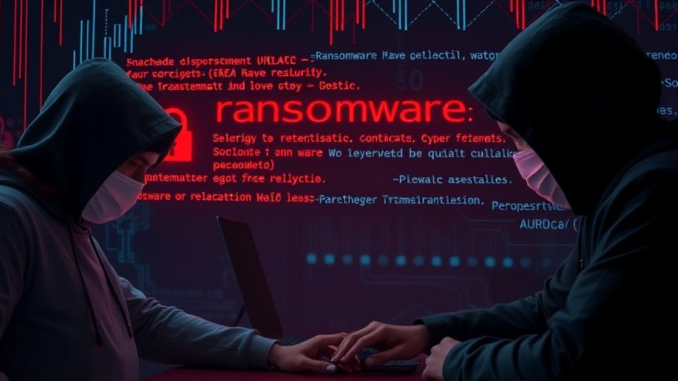
Summary
Ransomware attacks are evolving. Cybercriminals prioritize speed and volume over high-profile targets, deploying ransomware in mere hours. This shift requires enhanced vigilance and proactive security measures from organizations.
Explore the data solution with built-in protection against ransomware TrueNAS.
Main Story
Okay, so ransomware attacks are changing, and honestly, it’s a bit alarming. Forget the days of patiently stalking a whale; now, it’s all about casting a wider net, and faster. Criminals are prioritizing speed and volume, which means we’ve got to be even more vigilant.
The Need for Speed (and Lots of It)
It used to be all about those high-profile targets, you know, the big corporations where a successful hit meant a massive payday. I remember reading about that hospital system that got hit; they ended up paying millions! But, what’s happening now? Law enforcement’s stepped up its game, and frankly, we’ve gotten a bit better at defending ourselves. So, the bad guys are pivoting. Instead of focusing on a few big scores, they’re going for quantity. Hit a ton of smaller businesses quickly, and even with smaller ransoms, they can still make a killing.
And they’re getting sneakier, too. Advanced evasion techniques are becoming the norm, it seems. They’re finding ways around our firewalls and antivirus software, deploying ransomware before we even know what’s hit us. That’s why it’s so important to keep your security up to date. You don’t want to be a sitting duck.
Time-to-Ransom: Every Second Counts
Have you heard about Time-to-Ransom, TTR? It’s basically the amount of time it takes for attackers to go from initial access to actually dropping that ransom note. It’s a key metric now, because it tells you how fast these guys are moving. On average, it’s under 17 hours. Which, frankly, is terrifying. And some groups, like Akira and RansomHub, they’re even faster, sometimes deploying ransomware in just six hours! Can you imagine? That doesn’t leave you much time to react, does it?
It really puts the pressure on us, the defenders. So, what can you do?
Expanding the Attack Surface: Phishing and RATs
It’s not just ransomware we have to worry about, either. Phishing attacks are through the roof. And they’re not your grandma’s phishing emails anymore. They’re getting really sophisticated. Voicemail scams, QR code attacks, image-based phishing… they’re constantly finding new ways to trick people. And because they’re using these novel tricks, these are by passing security filters, making them really effective.
Plus, there’s the whole RAT (Remote Access Trojan) thing. They’re using these to gain long-term control over compromised systems. Think of it as a digital back door. They can use those systems as stepping stones to infiltrate even deeper into the network.
Hands-on Attacks: A Targeted Approach
There’s also a shift away from automated attacks and towards hands-on-keyboard attacks, or HOK. Instead of just letting the malware run wild, they’re actively involved, adapting to the situation in real-time. What this does is means the attacks are often targeted to specific industries, specifically those with valuable data and, unfortunately, weaker security.
Healthcare, education, and government sectors are getting hammered. It’s because they hold sensitive data, and maybe because they don’t always have the resources to invest in top-notch security. It’s a shame, but that’s the reality.
So, How Do We Fight Back?
Look, there’s no silver bullet here. You have to take a multi-faceted approach to cybersecurity.
- Robust security defenses: Firewalls, intrusion detection systems, the whole nine yards. Make sure you’ve got strong defenses in place to prevent unauthorized access. It’s like having a good lock on your door, you know?
- Regular software updates: Patch those vulnerabilities! It’s tedious, I know, but it’s crucial. Think of software updates as plugging holes in your armor.
- Employee training: This is huge. Train your employees to spot phishing scams and social engineering tactics. They’re your first line of defense, after all. Maybe even test them with simulated phishing attacks. A little tough love can go a long way.
- Incident response plan: Develop and regularly test an incident response plan. This way, if something does happen, you’re ready to respond quickly and effectively. It’s like practicing fire drills at school.
- Data backups: Offline, encrypted backups of critical data. If you get hit with ransomware, you can just restore your data and keep on going. It’s like having an insurance policy for your data.
This evolving threat landscape is a challenge, no doubt about it. But by staying informed, being proactive, and investing in the right security measures, you can significantly reduce your risk. And remember, it’s not just about technology; it’s about people, processes, and a culture of security.


Under 17 hours from breach to ransom note? I spill coffee faster than that! Guess I need to train my reflexes, both for avoiding phishing emails and mopping up digital disasters. Maybe cybersecurity skills should be an Olympic sport?
That’s a great point about cybersecurity in the Olympics! With TTR speeds getting so fast, maybe we need to start training a cybersecurity rapid response team. Could be a fun way to boost awareness and attract new talent to the field!
Editor: StorageTech.News
Thank you to our Sponsor Esdebe